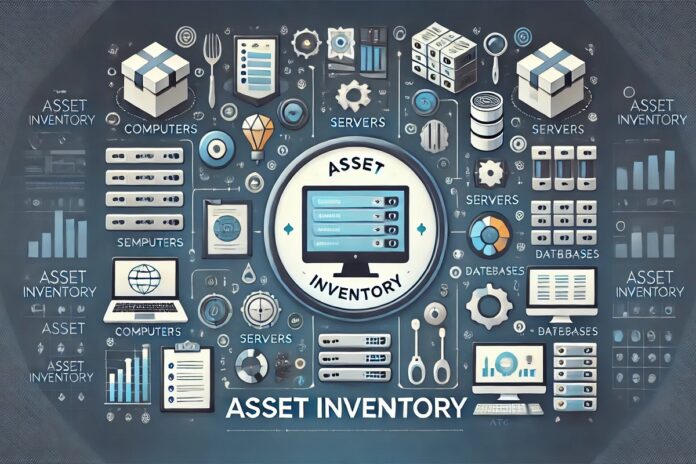Have you ever tried to manage all the gadgets and software in your business, and felt like you were juggling a thousand things at once? That’s where asset inventory comes in! Asset inventory is like a well-organized toolbelt that helps businesses keep track of all the valuable resources they have, from computers and servers to software licenses and even digital assets.
But what exactly is asset inventory, and why should you care about it? In this article, we’ll break down everything you need to know and show you how IT Asset Management Software can simplify the whole process for you.
Understanding Asset Inventory
When people talk about asset inventory, they’re talking about the process of cataloging and keeping an up-to-date list of all the physical and digital assets a business owns. Think of it as your inventory list for everything that powers your business.
What Constitutes an Asset?
Assets aren’t just limited to the things you can touch. In fact, assets can be both tangible and intangible, and they come in many different forms.
Hardware vs. Software Assets
Hardware assets include things like computers, printers, servers, and even mobile devices. If you can physically touch it and it’s essential to your operations, it’s probably an asset. On the other hand, software assets are a little more elusive. These include the programs and licenses you rely on to keep your business running, like operating systems, office productivity suites, or even specialized software unique to your industry.
Digital and Physical Assets
Don’t forget about digital assets like cloud storage accounts, virtual machines, or even digital certificates. While these don’t exist in a physical space, they are critical to your business’s daily functions. Tracking both physical and digital assets is key to understanding the full scope of your company’s resources.
Asset Inventory vs. Asset Management
Although the terms “asset inventory” and “asset management” are often used interchangeably, they aren’t quite the same thing.
Key Differences Explained
Asset inventory is essentially the act of listing all your assets, while asset management involves the broader process of overseeing these assets throughout their lifecycle. Asset management looks at everything from acquisition and maintenance to disposal. Inventory is just the first step in this bigger picture. When paired with IT Asset Management Software, asset inventory can evolve into a full-fledged strategy that benefits your business long-term.
The Importance of Asset Inventory in Modern Businesses
Asset inventory isn’t just a nice-to-have; it’s a must for modern businesses. Whether you’re a small startup or a large corporation, knowing what you own and where it is can make or break your efficiency and security.
Streamlining IT Operations
Efficient IT operations depend heavily on a clear understanding of the resources at your disposal. Without an accurate inventory, managing these resources becomes like searching for a needle in a haystack.
Reducing Downtime
Imagine your server goes down. If you don’t know what hardware or software is affected, getting back online can take hours or even days. With a detailed inventory, you can quickly identify the problem areas and reduce costly downtime.
Cost Efficiency
A well-managed asset inventory helps businesses avoid unnecessary purchases by ensuring that existing resources are used effectively. This can save a company thousands of dollars a year by reducing waste and over-purchasing.
Enhancing Security and Compliance
In today’s data-driven world, security breaches and non-compliance with regulations can have devastating consequences. A thorough asset inventory makes it easier to maintain security protocols and meet compliance standards.
Avoiding Data Breaches
Knowing exactly which devices are connected to your network can help you spot vulnerabilities before they turn into full-blown security incidents. With the help of asset inventory software, it becomes easier to track and secure every piece of hardware and software in use.
Meeting Regulatory Requirements
Whether it’s GDPR, HIPAA, or any other regulatory requirement, maintaining an up-to-date asset inventory is often a legal necessity. Proper documentation ensures you stay on the right side of the law.
How Asset Inventory Works
You might be wondering how businesses keep track of hundreds or even thousands of assets. Thankfully, with modern technology, this process is more streamlined than ever.
The Process of Asset Tracking
Tracking your assets can be done in several ways, from manual record-keeping to advanced, automated systems.
Using Barcode Scanners and RFID
Traditionally, barcodes and RFID tags have been used to track physical assets. These methods are efficient for keeping tabs on inventory, especially for larger companies with many moving parts.
Cloud-Based Asset Management Tools
For more advanced needs, cloud-based asset management solutions offer real-time tracking and reporting, making it easier to update your inventory and track assets across multiple locations. This is where tools like IT Asset Management Software come into play, offering automated solutions to track assets seamlessly.
Benefits of Implementing Asset Inventory
Wondering why all the fuss about asset inventory? Here are some concrete benefits that businesses see when they take inventory management seriously.
Increased Operational Efficiency
When you know exactly what resources you have, it’s easier to assign them effectively. This leads to smoother operations, as resources are properly allocated to where they’re needed most.
Improved Decision-Making with Accurate Data
Having accurate, up-to-date information about your assets empowers management to make informed decisions about purchasing, retiring equipment, and scaling operations.
Proactive Maintenance and Upgrades
Asset inventory helps businesses stay ahead of potential failures by tracking the age and condition of their equipment. This allows for proactive maintenance and upgrades, minimizing costly repairs or unexpected breakdowns.
Best Practices for Maintaining an Effective Asset Inventory
To make sure your asset inventory stays accurate and relevant, follow these best practices.
Regular Audits
Perform regular audits of your assets to ensure your inventory reflects the current status of all resources. Over time, assets get misplaced, damaged, or retired, and regular audits help keep your list accurate.
Keeping Data Up to Date
Ensure that every change, addition, or removal of assets is promptly recorded. This can be done automatically with asset management software, reducing the risk of human error.
Integration with Other ITSM Tools
Integrating asset inventory tools with your broader IT service management (ITSM) solutions ensures that all your business processes are interconnected. This leads to greater transparency and efficiency across departments.
Conclusion
Asset inventory is the backbone of a well-organized and efficient business. It allows you to know exactly what resources you have at your disposal, which in turn improves operations, reduces downtime, and strengthens security. By implementing modern solutions like IT Asset Management Software, businesses can automate and simplify this process, freeing up time and resources for other crucial tasks. Keep your asset inventory up-to-date, perform regular audits, and watch your business thrive.
FAQs
- What is the difference between asset inventory and asset management?
- Asset inventory is about listing and cataloging all of your assets, while asset management involves overseeing these assets through their lifecycle.
- How often should asset inventory audits be conducted?
- Ideally, asset inventory audits should be done at least annually, but depending on the size and complexity of your business, quarterly or bi-annual audits may be more appropriate.
- Can asset inventory software integrate with existing IT systems?
- Yes, modern asset inventory solutions often integrate seamlessly with existing IT systems, helping to provide a unified view of your entire IT infrastructure.
- How does asset inventory improve security?
- By tracking all devices and software, businesses can better secure their networks and identify vulnerabilities, reducing the risk of data breaches.
- Is cloud-based asset inventory better than traditional methods?
- Cloud-based solutions offer real-time updates, easy access across multiple locations, and reduced manual work, making them superior to traditional inventory methods for many businesses.







